- About MAA
- Membership
- MAA Publications
- Periodicals
- Blogs
- MAA Book Series
- MAA Press (an imprint of the AMS)
- MAA Notes
- MAA Reviews
- Mathematical Communication
- Information for Libraries
- Author Resources
- Advertise with MAA
- Meetings
- Competitions
- Programs
- Communities
- MAA Sections
- SIGMAA
- MAA Connect
- Students
- MAA Awards
- Awards Booklets
- Writing Awards
- Teaching Awards
- Service Awards
- Research Awards
- Lecture Awards
- Putnam Competition Individual and Team Winners
- D. E. Shaw Group AMC 8 Awards & Certificates
- Maryam Mirzakhani AMC 10 A Awards & Certificates
- Two Sigma AMC 10 B Awards & Certificates
- Jane Street AMC 12 A Awards & Certificates
- Akamai AMC 12 B Awards & Certificates
- High School Teachers
- News
You are here
Who's That Mathematician? Paul R. Halmos Collection - Page 30
For more information about Paul R. Halmos (1916-2006) and about the Paul R. Halmos Photograph Collection, please see the introduction to this article on page 1. A new page featuring six photographs will be posted at the start of each week during 2012.
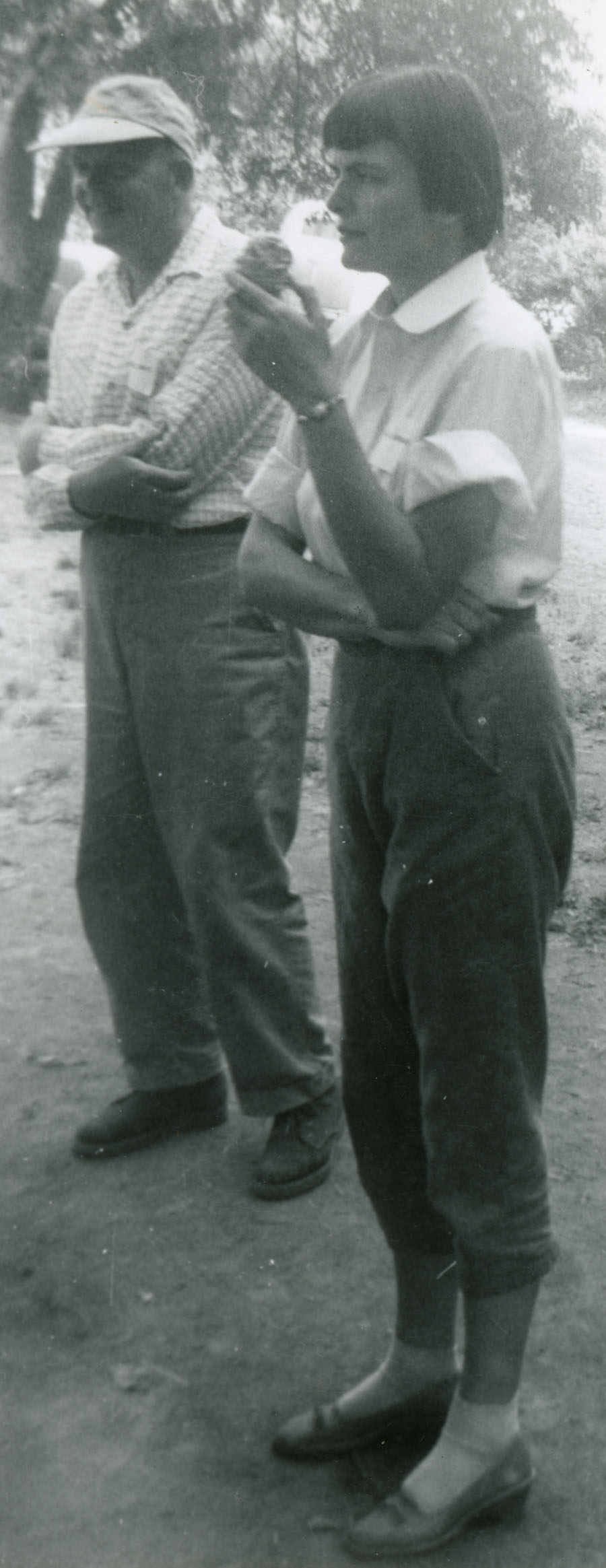
Halmos photographed Derrick H. Lehmer (1905-1991) and Julia B. Robinson (1919-1985) in about 1955, possibly at the University of California, Berkeley, where Lehmer was on the mathematics faculty at the time and Robinson, infamously, was not because anti-nepotism rules allowed at most one of her and her husband, mathematician Raphael Robinson, who had been on the UC Berkeley faculty since 1937, to hold positions in the mathematics department.
Number theorist Dick Lehmer, whose father Derrick N. Lehmer also was a well-known number theorist, earned his Ph.D. in 1930 from Brown University in Providence, Rhode Island. During the 1930s, Lehmer taught at Caltech, Stanford, and Lehigh, and spent one year each at the Institute for Advanced Study in Princeton (1933-34) and in England (1938-39), where he met number theorists Harold Davenport, Louis Mordell, and Paul Erdös, among others. In 1940, he joined the faculty at UC Berkeley, where his father had been a professor from 1900 until his death in 1938. Dick Lehmer’s Ph.D. students at Berkeley included prolific textbook-writer Tom Apostol, discrete mathematician and juggler Ron Graham (pictured on page 18 of this collection), bi-coastal number theorist Harold Stark, and mathematical puzzle-master David Singmaster, among other stars. (Sources: MacTutor Archive, IAS, Mathematics Genealogy Project)
Julia Bowman Robinson earned her Ph.D. in 1948 from UC Berkeley, with the dissertation “Definability and Decision Problems in Arithmetic,” written under advisor Alfred Tarski. Robinson may be best known for her contributions to the solution of Hilbert’s Tenth Problem, which was to find a general method to solve Diophantine equations and for which the solution is negative: there is no such method. According to Martin Davis, in the late 1960s, she, Davis (pictured on page 11), and Hilary Putnam “reduced the problem to finding a single equation that satisfied a certain exponential growth condition.” In 1970, Yuri Matijasevic completed the solution to “H10” by finding such an equation; this solution became known as the “MRDP Theorem” in recognition of the four mathematicians who contributed significantly to its proof. Robinson finally became a mathematics professor at Berkeley in 1976, the same year she became the first woman elected to the National Academy of Sciences. She was AMS president during 1983-84, the first woman to hold this position. (Sources: MacTutor Archive, Mathematics Genealogy Project, AMS Presidents)
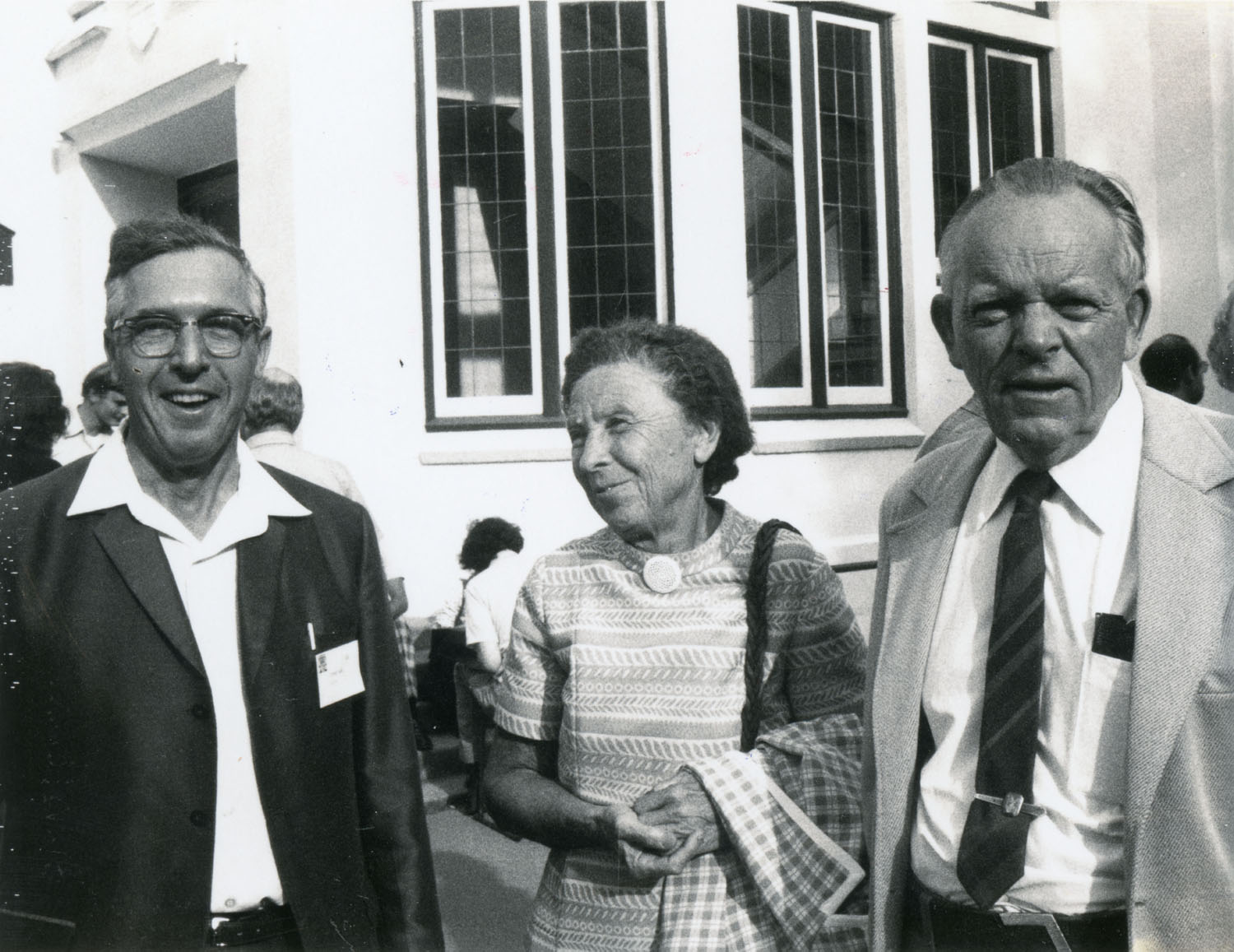
Halmos photographed, left to right, Steven Gaal, Emma Lehmer (1906-2007), and Derrick "Dick" Lehmer (1905-1991) on August 21, 1974, at the International Congress of Mathematicians in Vancouver, British Columbia, Canada. Another photograph of Gaal appears on page 15 of this collection, where you can read more about him, and another photo of Dick Lehmer appears just above this one.
Born in Samara, Russia, Emma Markovna Trotskaia met and married Dick Lehmer as an undergraduate mathematics major at the University of California, Berkeley, where he was a physics major. Emma Lehmer earned her masters degree in mathematics in 1930 from Brown University with a thesis in number theory that was published in the Bulletin of the AMS. During the 1930s, she accompanied her husband to his various academic posts listed above and finally to UC Berkeley in 1940. There she was allowed to teach for a few years because Berkeley’s anti-nepotism rules were relaxed during World War II. All the while, she was doing number theory research, often in collaboration with her husband and, early on, sometimes in collaboration with her father-in-law, Derrick N. Lehmer, with whom she had first done research as an undergraduate at Berkeley. Over a 60+-year research career, she published about 60 papers in various areas of number theory, about 20 of them jointly with her husband. One special interest that she and Dick Lehmer “inherited” from Derrick N. Lehmer was computational number theory, which in their day included helping develop computers that would carry out the computations. (Source: MacTutor Archive)
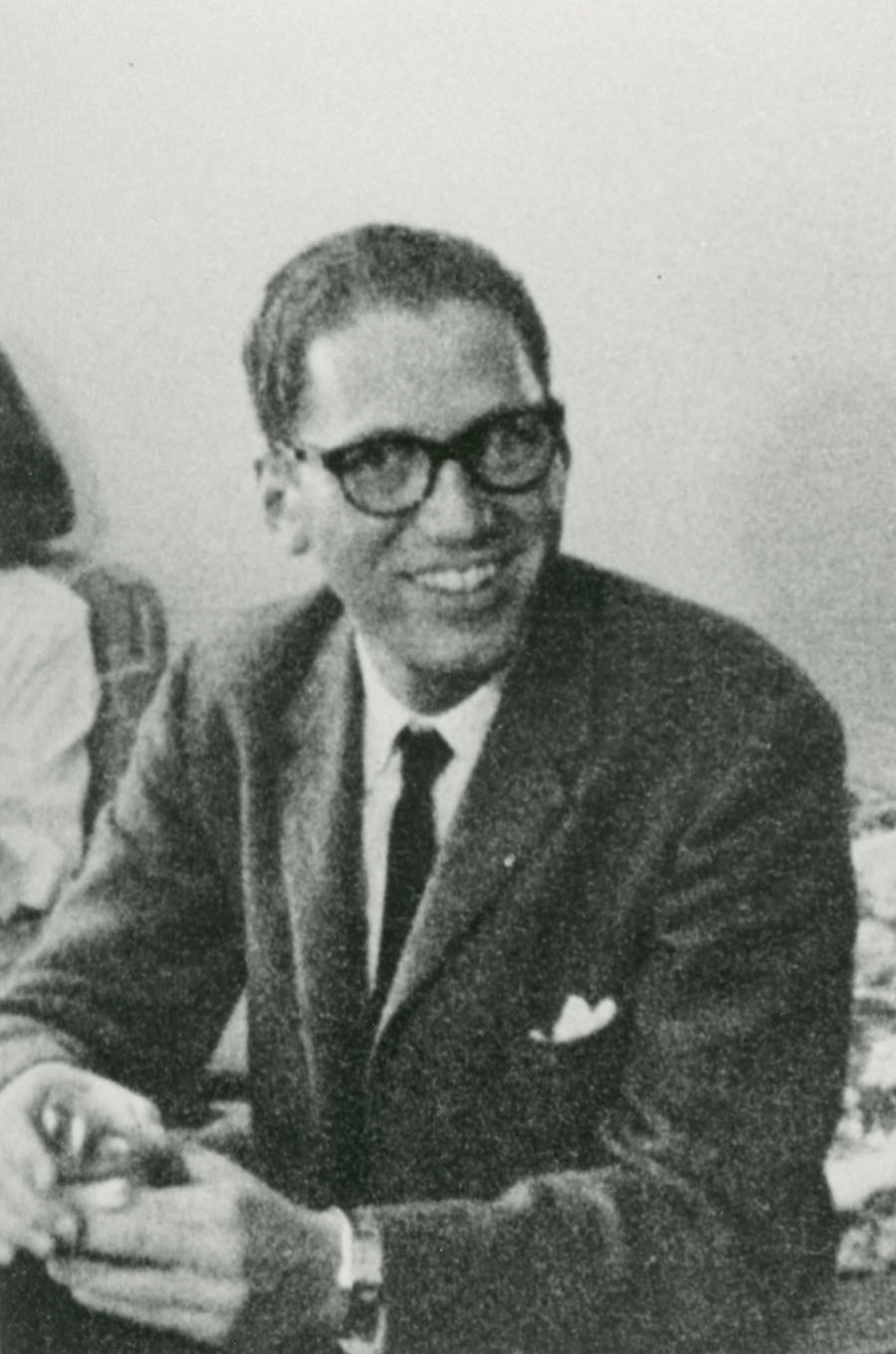
Halmos photographed Tom Lehrer in 1958. Known among mathematicians primarily for his satirical but light-hearted songs about mathematics, including “Lobachevsky,” “New Math,” and “The Derivative Song,” Lehrer also enjoys a wider popular following of his non-mathematical songs, including “The Subway Song” and “It Makes a Fellow Proud to Be a Soldier.” Lehrer came by his technical and sociological knowledge of the mathematical world as an undergraduate mathematics major and a mathematics graduate student at Harvard University in Cambridge, Massachusetts, where he earned a masters degree in 1947 and worked for a few years toward a Ph.D. He lives for half the year in Massachusetts and the other half the year in Santa Cruz, California, where he teaches two courses, one on musicals and one on the nature of mathematics, at the University of California, Santa Cruz. (Sources: Demented Music Database biography; National Curve Bank Deposit #10)
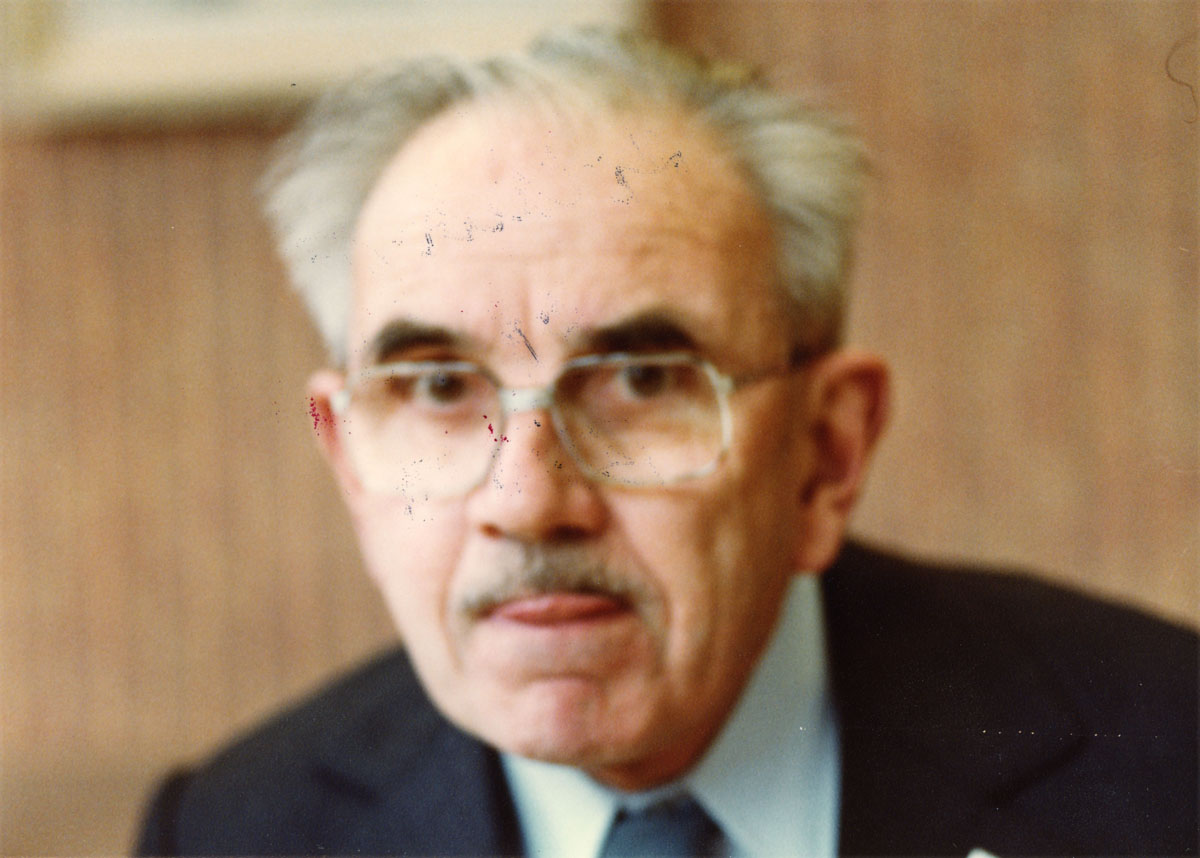
Jean Leray (1906-1998) was photographed by Halmos in April of 1980 in Bloomington, Indiana. Born near Nantes, France, Leray earned his Ph.D. in 1933 from the École Normale Supérieure de Lyon, although by then he had moved to Paris. His work at this time was in hydrodynamics, which might surprise those who know of Leray as an algebraic topologist. His first work in algebraic topology was an application of homotopy to solutions of partial differential equations, and he published work both in topology and in differential equations throughout his career. The exception was 1940-45, when he was a prisoner of war in Austria and convinced his German and Austrian captors that he was an algebraic topologist rather than an expert in hydrodynamics, which would have made him all too useful to them. He both taught and researched topology in his prison camp. In 1947, he joined the faculty of the Collège de France. According to the Mathematics Genealogy Project, Leray’s first Ph.D. student was Armand Borel (pictured on page 8 of this collection) in 1952, whose dissertation was on the cohomology of Lie groups. (Sources: MacTutor Archive, Mathematics Genealogy Project)
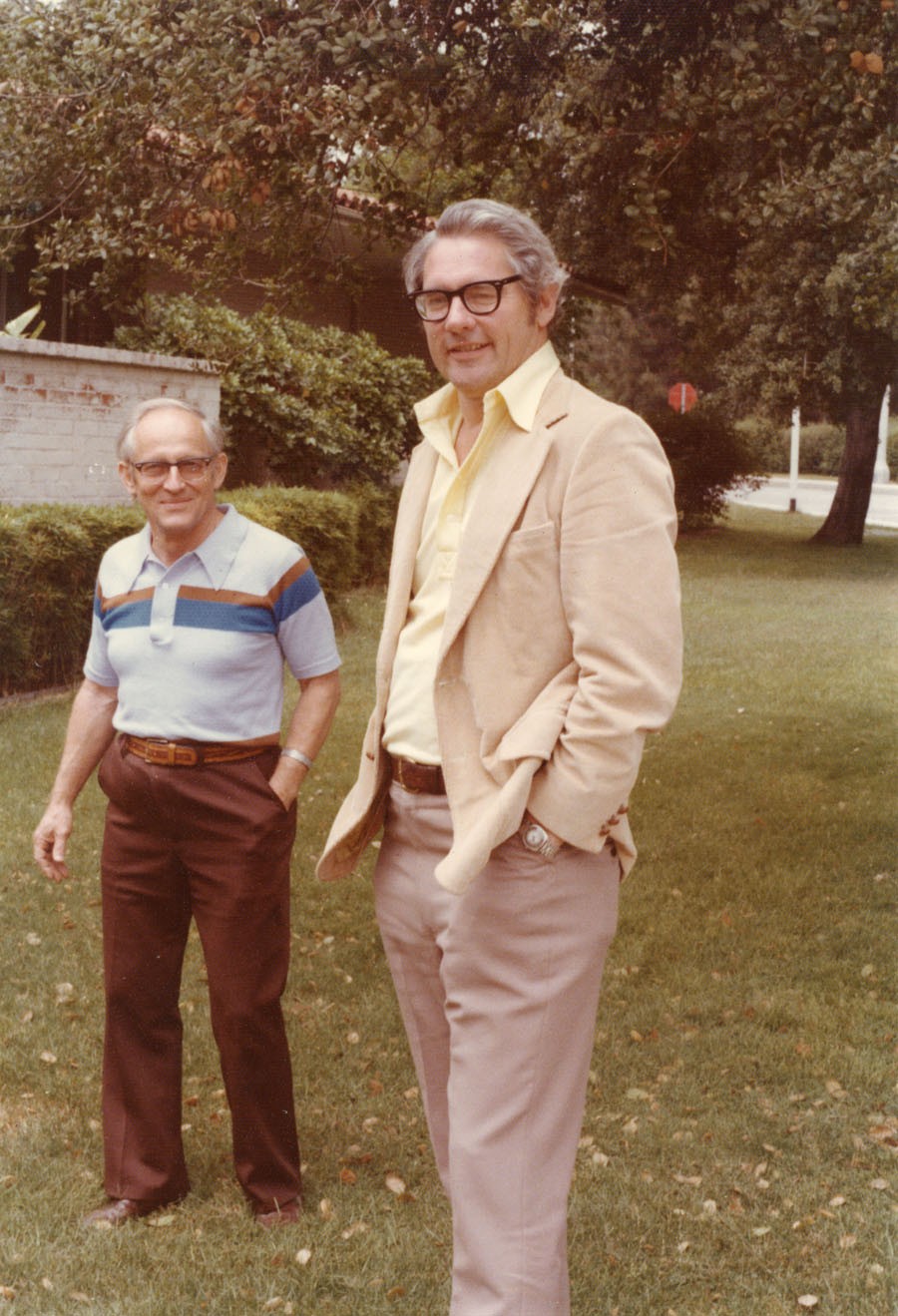
Halmos photographed functional analyst Robert C. James (d. 2004), left, and number theorist William J. LeVeque (1923-2007) in May of 1976 in Claremont, California, where both were faculty members at the Claremont Graduate School (now Claremont Graduate University). Phil McCartney, a Ph.D. student of Bob James at the time the photo was taken and now a mathematics professor at Northern Kentucky University, remembers well Paul Halmos' visit to CGS:
Paul came to Claremont for a visit of roughly three days and gave several terrific lectures. It seemed that he spent more time during his visit interacting with those of us who were graduate students than was customarily the case when visiting speakers came to the campus and typically spoke primarily with the faculty. In particular, at a reception after his first talk, Paul apparently overheard some of the other graduate students giving me a hard time about my car, a white 1965 Pontiac Bonneville, that was known as "the white whale". In a voice loud enough for the other graduate students to hear, Paul asked me if I could give him a ride to the place where he was staying after the party was over. I smiled broadly and said, "Yes, of course." After that party, whenever my fellow grad students referred to my car, I said, "You mean the car Paul Halmos asked to ride in." My car had become "the car".
McCartney was awarded his Ph.D. in 1978. Another photo of Bob James appears on page 25 of this collection, where you can read more about him.
Bill LeVeque earned his Ph.D. in 1948 from Cornell University with the dissertation, “On the Distribution of Values of Number-Theoretic Functions,” written under advisors Burton W. Jones (page 6) and Mark Kac (page 26). He taught at Harvard for two years (1947-49), at the University of Michigan from 1949 to 1970, and at Claremont Graduate School from 1970 to 1977. From 1977 to 1988, he was Executive Director of the AMS. In 1965-66, he was Executive Editor of Mathematical Reviews and was responsible for moving MR from Providence, R.I., to Ann Arbor, Michigan. He remained involved with the administration of MR until 1977, and also published a 6-volume collection of Reviews in Number Theory in 1973. His books Topics in Number Theory: Volumes I and II (1956), Elementary Theory of Numbers (1962), and Fundamentals of Number Theory (1977) have been reprinted by Dover Publications. (Sources: Mathematics Genealogy Project; "William J. LeVeque Retires as Executive Director," AMS Notices 35:6, 783-4; "William J. LeVeque (1923-2007)," AMS Notices 55:10 (November 2008), 1261-2; Dover Publications)
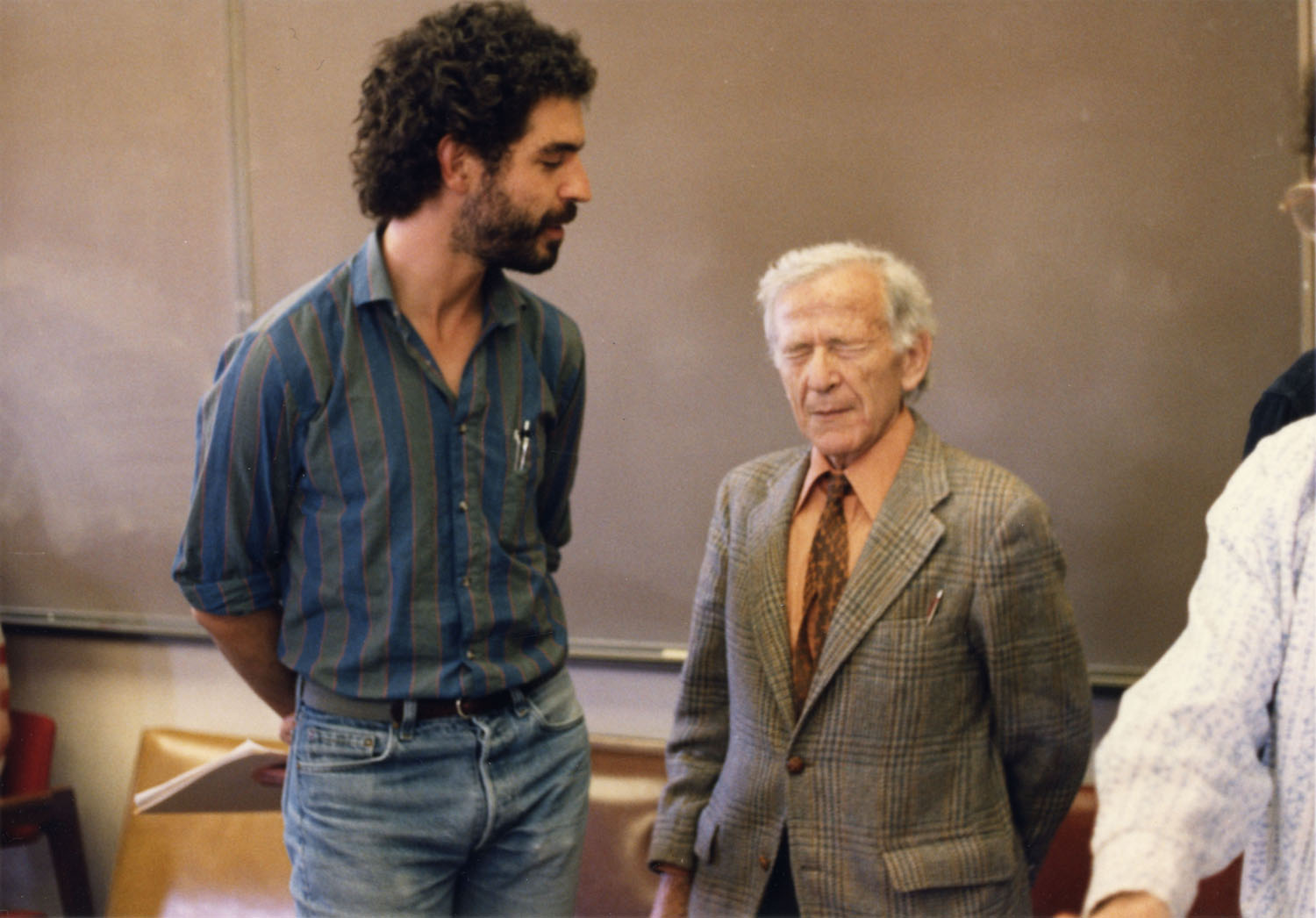
Halmos photographed Walter Craig, left, and Hans Lewy (1904-1988) in May of 1986 at Stanford University in Palo Alto, California, just before Lewy, then Professor Emeritus at the University of California, Berkeley, was to present a seminar. Craig, a faculty member at Stanford at the time, writes:
I remember the occasion well, when I invited Hans Lewy to Stanford to give a seminar. At first he was a little coy, saying that he was working on something that hadn't panned out yet. Then one day a bit before the photo was taken, he called up all excited about it, and we arranged for him to come and talk about these new results. However by the day of his seminar he had found a flaw in his argument, so he gave a lecture on a beautiful problem in differential geometry, and a sequence of interesting lemmas that might prove to be useful in addressing it.
Halmos was a professor at Santa Clara University at the time. All three universities are in the San Francisco Bay Area.
Craig now is at MacMaster University in Hamilton, Ontario, where he is Professor and Canada Research Chair of Mathematical Analysis and its Applications. He earned his Ph.D. in 1981 from the Courant Institute of Mathematical Sciences at New York University under advisor Louis Nirenberg. After holding positions at Caltech (1981-84), Stanford (1984-88), and Brown (1988-2000), he joined the faculty at MacMaster in 2000. His current research interests are nonlinear partial differential equations, Hamiltonian dynamical systems, fluid dynamics, and quantum mechanics. (Sources: MacMaster University Department of Mathematics and Statistics, Mathematics Genealogy Project)
Born in Breslau, Germany (now Wroclaw, Poland), Lewy earned his Ph.D. in 1926 from the University of Göttingen under advisor Richard Courant (pictured on page 10 of this collection). Except for one year each in Rome (1929-30) and Paris (1930-31), he remained at Göttingen until 1933, when he moved to the U.S. to escape the political situation in Germany. After two years at Brown University in Providence, R.I., he joined the faculty at UC Berkeley in 1935 and, even after retiring in 1972, remained an active researcher until his death in 1988. Lewy’s main area of research was partial differential equations, with results ranging from theoretical to applied (water waves and fluid dynamics) and from analytical to numerical. He also obtained important results in calculus of variations. (Source: MacTutor Archive)
For an introduction to this article and to the Paul R. Halmos Photograph Collection, please see page 1. Watch for a new page featuring six new photographs each week during 2012.
Regarding sources for this page: Information for which a source is not given either appeared on the reverse side of the photograph or was obtained from various sources during 2011-12 by archivist Carol Mead of the Archives of American Mathematics, Dolph Briscoe Center for American History, University of Texas, Austin.
Janet Beery (University of Redlands) and Carol Mead (Archives of American Mathematics, University of Texas, Austin), "Who's That Mathematician? Paul R. Halmos Collection - Page 30," Convergence (January 2012), DOI:10.4169/loci003801




